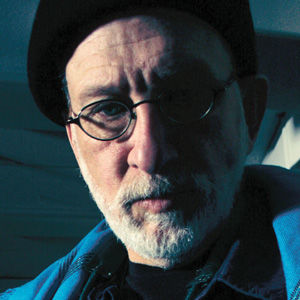Conversing with Maimonides with eyes wide open
Published October 25, 2018
“We are in the midst of a mental health crisis, and we are trying to deal with it in a proactive, integrated, eyes-open response,” Rabbi James Stone Goodman writes
I was conversing with Maimonides’ father, Maimon ben Yosef, who introduced me, when I was a much younger man, to the maqam musical system of the eastern Mediterranean that took over my artistic life. I was in Jerusalem, and I sat down in a park just after Passover and heard a sound I had never encountered before coming from the musicians and dancers all around. What is this? I asked. Maimuna.
Maimuna is a celebration especially popular among North African Jews dedicated to the father of Maimonides. It changed everything for me. I began to learn the music and the culture and the thought of the Jews of the Eastern Mediterranean.
ADVERTISEMENT
It was an opening for me; later, I would refer to it as an opening of the eyes. I picked up this expression from Maimonides himself. There was a distinctionbetween an opening of the eyes and prophecy among the ancestors.
About prophecy, it’s a word not easily used. It’s a lofty term. The classical prophets of Israel were unique spokespeople for G-d, a noble opposition, who spoke poetry but ceased speaking after a time.
This week’s Torah lesson contains some of the most difficult stories of our holy text. There is a suggestion that the whole portion was a vision or a prophecy or a dream.
ADVERTISEMENT
Maimonides suggests this in his “Guide for the Perplexed” (II:42), in which he wrote that whenever the Torah mentions that an angel was seen or had spoken it means that it happened in a vision or in prophecy or in a dream. Maimonides cites this portion as an example. The commentators tell us that the three men who appear to Abraham at the beginning are angels. They appear and they do not speak. Clue.
Another clue: The Torah teaching begins and ends with the same root word: va-yera, they appear. They appear in the beginning (Gen.18:1) and at the end of the portion (Hashem yir-eh, G-d appeared, Gen.22:14). Same root word.
The stories in this portion – the silences, the talk, the absence of talk, the visiting, the blessing, the laugh of Sarah, the argument with G-d, the flight of Lot, the trickiness of Abraham, the remembering of Sarah, the circumcising of Isaac, the alienation of Hagar and Ishmael, the terrible trek to the mountain of G-d – the whole portion is a revelation, a vision, an appearance of G-dliness.
Something like prophecy, but not prophecy, more like a vision, like an expansion, like an opening of eyes.So say the commentators. We are all commentators on the texts of existence.
That’s useful language for me. My wife and I are trying to remind our community that mental health is central to our community agenda. None of us are prophets, but we get the concept of an opening of the eyes. We are in the midst of a mental health crisis, and we are trying to deal with it in a proactive, integrated, eyes-open response. I think we can do better as a community.
Join my wife, Susan Talve, and myself for “An Opening of the Eyes,” a community responds to mental health and mental illness,at 2 p.m. Sunday, Nov. 18 at the Staenberg Family Complex of the Jewish Community Center, 2 Millstone Campus Drive. Maimonides will be there. Maimonides’ father. All of them.
Rabbi James Stone Goodman serves Central Reform Congregation and leads the Shalvah recovery group and No Shanda, a mental health support group. Goodman is a former president of the St. Louis Rabbinical Association, which coordinates the D’var Torah for the Jewish Light.















